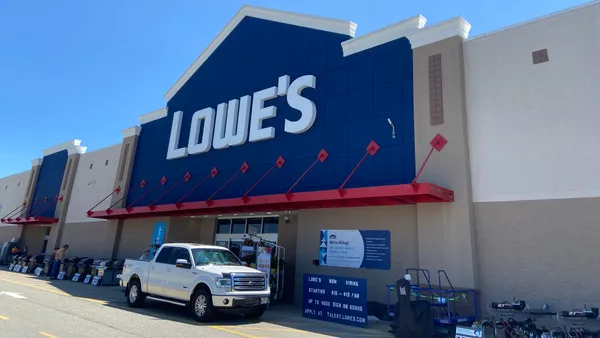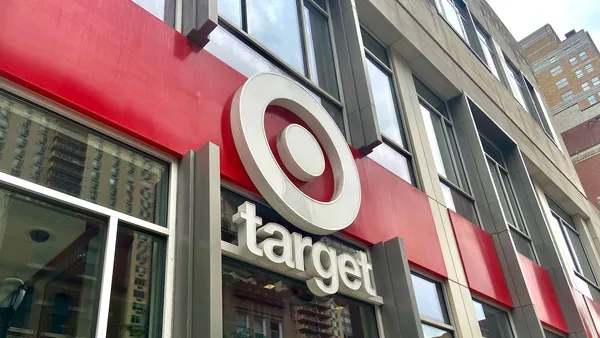A timeline of how the pandemic hit retail
Editor's Note: This story is part of a series about the pandemic's impact on retail in 2020, and what it means for 2021. Find the rest of the stories here.
Witnessing the pandemic’s impact on retail has been like watching a series of waves wash over the industry. When the pandemic began, and retailers weren’t sure exactly how long-lasting the crisis would be, Retail Dive kept a tracker that evolved into a living journal of how retailers were responding to the unique events of 2020.
What’s come out of that is a trove of data about when retailers made the decision to shut their doors, which ones stayed open, and how employees were impacted by those choices.
By and large, the temporary shuttering of nonessential retailers in mid-March was swift. Decisions were made by the majority of retailers Retail Dive tracked within a four-day span as it became clear that the pandemic was going to impact the whole country.
“From a business perspective, that was just an immediate triage,” Matt Katz, a managing partner at global advising firm SSA & Company, said of the time period. “Revenue streams stopped, furloughs were contemplated, cost reduction activities began, rent abatement and furloughs began. The second quarter was all about cost control and understanding the potential impact.”
Hand in hand with the store closures came widespread furloughs as retailers tried to find ways to survive financially. The week of March 29 alone, 33 retailers Retail Dive tracked announced furloughs or layoffs of some kind, or a combination of the two. And these were just the furloughs and layoffs that came with announcements in the first half of the year. There were surely many more that weren't in the scope of the tracker or that were not announced.
The high-level trends of the pandemic can be seen just by looking at which retailers furloughed or laid off employees and which select few announced hiring. For the most part, those hiring were drugstores like CVS, big-box players like Walmart and club stores like BJ’s. While many furloughs were definitely a reaction to the immediate financial struggles of the pandemic, the health crisis is not over, and decisions around employees will continue to dog retailers into the new year.
“A big driver of cost within any retail operation is labor, and so it will force retailers to look long-term about what roles they need, where they can leverage self-service and automation and what do they need to strengthen their business to resume growth in the new year,” Shannon Warner, a partner in the consumer practice at Kearney, said.
Reopening has been a slower, elongated process, and one punctuated by re-closings as resurgences of the virus have caused businesses to shut again in certain areas, either based on their own judgment or by state order. Whereas most of the closures we recorded occurred in four days, most of the reopenings we recorded spanned three weeks.
| Retailer | Date of announced closures | Additional info |
|---|
| Retailer | Date of layoffs | Date of furloughs | Date of hires | Additional info |
|---|
Warmer weather in the summer helped for a matter of months as retailers and consumers alike looked to the outdoors for preservation. Katz noted that hobbies like golf and cycling picked up, buoying some businesses, and the “omni-everywhere approach” became particularly important.
Yet still, retail as an industry has struggled to recover from the devastation wrought by the pandemic, in part because recovery is not an easy equation to solve, according to Katz.
“This is a health issue that became a social concern, which became an economic issue,” Katz said. “And so the reason why this recovery is such a start and stop is because you’ve got to get all three of these vectors, or all three of these items, moving forward in a positive way.”
Underneath it all has been a steady drumbeat of bankruptcies, many apparel retailers, as the global health crisis pushed dozens of retailers over the edge financially. Retail Dive has tracked bankruptcies for years, and 2020 outpaced every other year we’ve recorded, starting in 2017. In fact, 2017 was the year that got closest to 2020’s total, with 21 bankruptcies during a time period many were calling the retail apocalypse, compared to 30 Retail Dive recorded this year.
May and July were particularly bad months for retail, notching a grim total of 15 filings between them.
“Stores that sit inside malls have been hit harder than most,” Warner said. It’s a trend that existed long before the pandemic, but as with many things, the crisis accelerated it, with major retailers like Gap seeking to distance themselves even faster from the traditional mainstays of retail.
There have been unexpected winners, for example the home space and athleisure, but much of retail’s story in 2020 — and likely much of it going into 2021 — is one of survival.
“The impact on malls is magnified,” Warner said, “and those retailers who were struggling to start with — it’s just accelerated the economic impact for those companies.”
Correction: A previous version of this article misstated the number of bankruptcies Retail Dive tracked in 2020. There were 30 bankruptcies. The article has also been updated to clarify how bankruptcies appear in the timeline.
Methodology
All of the data in this piece was collected by Retail Dive. Over the year, Retail Dive tracked approximately 155 retailers and recorded initial store openings and closings, as well as furloughs, layoffs and hirings through the summer. Not all retailers are reflected in every visualization, either because Retail Dive did not have information on a certain metric for them, or because the information available was not clear enough to merit inclusion.
This data set does not include the whole of the retail industry, but is rather a reflection of Retail Dive's coverage area for the year. There are additional retailers of all sizes that closed stores and furloughed employees that are not included on our list, and companies we included may have taken additional actions not reflected here either because those actions were not announced or were not clear.
The retailers included in the bankruptcy count are based on Retail Dive's coverage area and do not amount to the full number measured by other firms. For example, we do not include restaurants and some small retailers.












